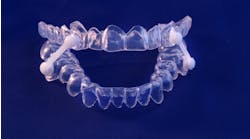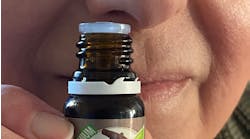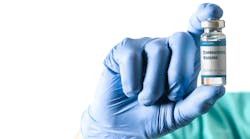DALLAS (GLOBE NEWSWIRE) — Obstructive sleep apnea may cause changes in blood vessel function that reduce blood supply to the heart in people who are otherwise healthy, according to new research reported in Hypertension: Journal of the American Heart Association.
However, treatment with 26 weeks of continuous positive airway pressure (CPAP) improved study participants' blood supply and function.
Obstructive sleep apnea, which causes periodic pauses in breathing during sleep, affects about 15 million adults in the United States, according to the American Heart Association. The sleep disorder may be a contributing factor to high blood pressure and cardiovascular diseases.
"The findings should change how doctors treat patients with obstructive sleep apnea," said Gregory Y.H. Lip, MD, lead author of the study and professor of cardiovascular medicine at the University of Birmingham in the United Kingdom. "Even apparently healthy patients with sleep apnea show abnormalities of small and large blood vessels, as well as impaired blood supply to the heart muscle, and these can improve with CPAP therapy."
CPAP treatment provides a constant airflow that holds the airway open to maintain uninterrupted breathing during sleep. This eliminates sleep apnea events and allows the patient to get a restful sleep.
The study is the first to show blood vessel abnormalities in sleep apena patients. Previous studies have linked blood vessel dysfunction to cardiovascular disorders.
Reversing blood vessel abnormalities could help patients with obstructive sleep apnea who are otherwise healthy avoid developing and dying from cardiovascular disorders, researchers said.
Researchers looked for changes in blood vessel function in 108 participants who were otherwise healthy, with no differences in age, sex, body mass index, and smoking status across three groups:
- 36 people with moderate or severe obstructive sleep apnea without high blood pressure
- 36 high blood pressure patients without obstructive sleep apnea
- 36 patients with neither high blood pressure nor obstructive sleep apnea
Researchers used several techniques to assess blood vessel function, including myocardial contrast echocardiography to check the blood supply to the heart muscle.
All the sleep apnea patients received CPAP therapy; so proper randomized studies will still be needed to confirm the intervention's beneficial effects on the blood vessels, Lip said.
Furthermore, patients in the control groups weren't treated with CPAP therapy, which would have been clinically unjustified because none had obstructive sleep apnea, researchers said.
Lip hopes his research will bring greater awareness to the relationship between obstructive sleep apnea and cardiovascular diseases. "The condition can be treated, and it is important that clinicians look out for it," he said.
Co-authors of the study are: Mehmood Butt, MD, MBBS; Omer A. Khair, PhD; Girish Dwivedi, MD; Alena Shantsila, MD; and Eduard Shantsila, MD. Author disclosures are on the manuscript.
The study was partially funded by Bracco Research, Sa, Switzerland. Statements and conclusions of study authors published in American Heart Association scientific journals are solely those of the study authors and do not necessarily reflect the association's policy or position. The association makes no representation or guarantee as to their accuracy or reliability. The association receives funding primarily from individuals; foundations and corporations (including pharmaceutical, device manufacturers and other companies) also make
donations and fund specific association programs and events. The association has strict policies to prevent these relationships from influencing the science content. Revenues from pharmaceutical and device corporations are available at www.americanheart.org/corporatefunding.
NR11 — 1095 (Hyper/Lip)
Additional resources:
- Downloadable stock footage, animation and our image gallery are located at www.heart.org/news under Multimedia.
- www.heart.org/heartattack
- Sleep Apnea and Cardiovascular Disease






